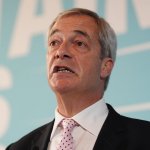Rising numbers of European journalists are facing dangerous physical attacks as they try to cover news stories, according to recent reports. Data from the Council of Europe safety of journalists platform shows that physical attacks on journalists more than doubled between 2019 and 2021 – with 33 attacks being recorded in 2019 compared to 51 in 2020 and 76 in 2021.
One emerging trend identified by the Council of Europe research, and other sources, are attacks on journalists covering protests of anti-lockdown demonstrations and reporting on breaches of lockdown measures.
Details of journalists being attacked while covering anti-vaccination and anti-lockdown protests is showing up in reports from a variety of sources in Europe and beyond. This is sending a worrying signal about media freedom and the security of journalists.
Campaigners highlighted an increase in reported physical attacks on European journalists in a recent meeting with the Council of Europe committee of ministers, calling for more protection for media freedom and for those who murdered journalists to be brought to trial.
Journalists are facing all sorts of threats related to reporting on COVID. In Italy several reporters have been threatened and assaulted while reporting on demonstrations against the country’s COVID-19 green pass. The green pass is a certificate showing if a person has been vaccinated, tested negative or recovered from the virus introduced by the Italian government in October 2021, and is mandatory for all workers to show at their workplaces, for dining inside at restaurants and to attend large events.
In October, La Repubblica photojournalist Alessandro Serranò was taken to hospital with minor injuries after being violently attacked with a shovel wielded by a man at a protest in Rome. His La Repubblica colleague Francesco Giovannetti received death threats and was physically assaulted at another anti-green pass demonstration a month earlier.
In France, a France 3 TV team was violently attacked on March 27 2021 as they reported on a rally against COVID-mitigating measures.
In the UK, the BBC is reviewing its security advice to its journalists after dealing with a rise in verbal and physical attacks including at least one related to anti-lockdown protesters. Nick Watt , political editor of BBC Newsnight, who was chased by an anti-lockdown mob who shouted “traitor” and other slurs at him in June 2021 outside Downing Street.
Attacks in the streets
In August 2021 a group of anti-vaccine protesters attempted to storm what they believed to be the BBC headquarters but was actually a building the BBC vacated in 2013. Protesters criticised the BBC’s news coverage of the coronavirus pandemic – individuals were recorded saying: “We’ve got to take over these bastards”. Others have described the media “as the virus”.
The danger for journalists as represented by these, often violent, COVID-related attacks needs to be understood alongside rising numbers of other threats to news journalism.
Physical attacks on journalists come against a backdrop of some influential politicians criticising reporting and reporters in ways aimed at creating (or exploiting) a loss of trust in news journalism among.
Examples include former US president Donald Trump, whose verbal attacks on the US press have been shown to be “effective at eroding the credibility of the press and undercutting consensus even as the COVID-19 pandemic continues to kill hundreds of Americans each day”, according to the Committee to Protect Journalists. In Europe, similar tactics have also been applied by political leaders such as Hungary’s prime minister, Viktor Orbán.
There have been attempts to restrict journalists from covering the health crisis in Hungary, Serbia, the Russian Federation and Bulgaria where “fake news laws” and other legislation have put reporters at risk of fines or prison for reporting what authorities have condemned as “false” or “unauthorised” information” – but is often fair but critical journalism.
Despite a public desire for accurate information about COVID and its implications, in countries such as the Russian Federation, Turkey, Hungary and Poland, escalating antagonism towards the media includes state-led dismantling of journalistic independence and growing ownership of the media by political figures.
Growing list of murders
This includes the revoking of the license of independent broadcaster Klubrádió in Hungary while in Poland, the leading publisher of regional newspapers was purchased by a state-controlled oil company, and a new law was passed banning media ownership by foreign companies.
This coincides with the some of the highest numbers of physical attacks on journalists recorded by the Council of Europe between 2015 and 2021 in the Russian Federation (33) and Turkey (30).
The increase in attacks comes after a series of assassinations of European journalists in recent years, including the murder of Lyra McKee in Northern Ireland, and reporters in Malta, Slovakia, Greece and the Netherlands.
Out of 33 reported cases of killings between 2015 and 2021, 26 cases – including the murder of Slovak reporter Ján Kuciak in February 2018 – have not resulted in the trial and conviction of the perpetrators.
It has been four years since the assassination of journalist Daphne Caruana Galizia in Malta in October 2017. Those responsible have still not been prosecuted.
The reduction in media freedom is not across every country, of course. Several European countries – notably Norway, Finland and Sweden – remain at the top of the 2021 World Press Freedom Index rankings.
But what these cases signal is a worrying shift towards increasingly antagonistic societies that create a normalised environment for dangerous attacks and legal restrictions on news journalism in a wide range of European countries.
![]()
Sara Torsner has received funding from Free Press Unlimited and the International Center for Journalists. She is affiliated with UNESCO as the coordinator of the UNESCO Chair on Media Freedom, Journalism Safety and the Issue of Impunity.











